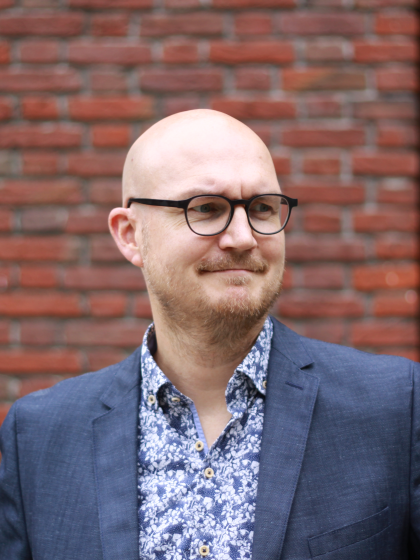prof. dr. J.H.C. (Joost) Heutink

NAH-Progress study (2016-2021) Visual impairments in patients with multiple sclerosis and Parkinson's disease: Prevalence, diagnosis and rehabilitation. The NAH-Progress study is mapping the prevalence, as well as the nature and severity of the visual complaints and dysfunctions of patients with a neurodegenerative disease, including MS and PD.
Assessment and Rehabilitation of Non-Specific Visual Complaints after Acquired Brain Injury – a Case-Control Study (2013-2018). This large case-control study (n=600-900) aims at p roviding the necessary methods for assessment and treatment of non-specific visual complaints after ABI and expand our knowledge about the underlying mechanisms of these complaints.
Safe Cycling (2015-2018). In the Netherlands, the ability to cycle safely and responsibly is important for independent mobility across the lifespan. In addition, cycling can be important in maintaining physical health. But when can a visually challenged person use a bicycle safely? Opinions vary, but there are no reliable - let alone evidence-based - guidelines.‘Safe Cycling’ is a research collaboration between the University of Groningen and two expertise centres for blind and partially sighted people; Royal Dutch Visio and Bartimeus. This project is aimed at providing an overview of cycling behaviour of visually impaired individuals. In that way, more scientific backing can be given for determining whether it is safe and responsible for them to (learn how to) cycle. Firstly, essential factors that determine whether it is safe for a visually impaired person to cycle independently will be investigated through (online) questionnaires. Secondly, observing real world cycling behaviour will serve to explore how visually challenged cyclists compensate for loss of visual acuity or a reduced visual field. Finally, the cycling behaviour of visually challenged cyclists (65-75 years) on a regular bicycle and an E-bike will be compared.
Mobility4all: Slow motorised traffic for visually impaired people (2012-2018). This research project aims to determine which visual functions are important for the safe use of slow motorized vehicles, to identify the barriers to the use of these vehicles and to evaluate any interventions applied to address these problems and challenges. The study consists of large-scale observational cohort study and an experimental study (n=120)
The effects of Scanning Compensatory Therapy for patients with homonymous visual field defects – a randomized controlled trial (2009-2014). The goal of this study is to carry out an RCT to study the effect of Scanning Compensatory Therapy among patients with homonymous visual field defects due to postchiasmatic lesions of the visual system after brain injury. Patients (n=57) were randomly allocated to a treatment group or a waiting-list control group.
The effect of Compensatory Scanning Therapy for people with homonymous visual field defects on driving (2009-2014). A study to evaluate fitness to drive in patients with homonymous hemianopia (n=27).
